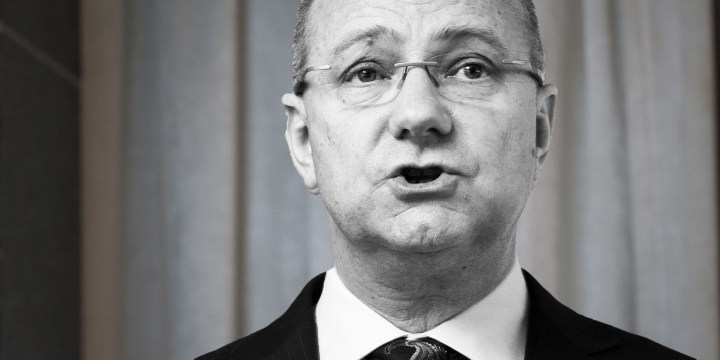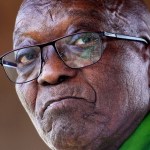BUSINESS MAVERICK
Anglo American shows the market the money

Anglo American was the only global diversified miner not to have initiated share buybacks or special dividends in the previous reporting period. The group’s payout ratio also ranked poorly alongside its peer group. That all changed on Thursday 25 July when Anglo announced it will return $1.8bn to its shareholders. The company has been cashing in on the reigning iron ore price. But this windfall will come to an end. And then what?
Local and London-listed Anglo American has joined Rio Tinto, BHP Billiton and Glencore on the buyback bus. The programme will run until the end of March 2020.
The programme will be executed in two tranches of up to $500-million each, and the number of ordinary shares permitted to be purchased – as agreed to at the AGM on 30 April – is 210.6 million ordinary shares.
“The buyback comes as a surprise, but a welcome one”, Tyler Broda, an analyst at RBC Capital Markets told the Financial Times. “This indicates confidence (and especially given the current price environment) that there will be excess cash flow beyond the growth [capital expenditure] capex for the portfolio.”
Until now Anglo has shied away from delivering the sort of shareholder returns seen from its larger rivals because of a greater focus on organic growth.
But Investopedia says that businesses that have expanded to dominate their industries, for example, may find that there is little more growth to be had. And “with so little headroom left to grow into, carrying large amounts of equity capital on the balance sheet becomes more of a burden than a blessing.”
Buybacks are very much in vogue in South Africa. Wescoal is already doing it and Gemfields is considering it. Trans Hex wants to take this route and delist. Even small-cap favourites like Argent and Bowler Metcalf find it cheaper to buy back their own shares, than invest in anything else.
Independent analyst Anthony Clark agrees, saying: “It’s just the most efficient allocation of capital in the current market.”
It benefits many stakeholders.
A reduction in share count increases earnings per share and boosts the pay packages of the executives who are rewarded on this improvement and that of other financial metrics, Clark says.
The biggest shareholders in Anglo are Anil Agarwal, the Indian metals tycoon, and South Africa’s Public Investment Corporation (PIC), which manages assets mainly for the government employees’ pension fund. The PIC has been selling down its stake in Anglo in 2019.
CEO Mark Cutifani said: “We have a disciplined and value-focused approach to capital allocation that is designed to fund the sustainability of our existing business and our base cash dividend for shareholders. With a strong balance sheet in place, we then consider the appropriate balance of options for any discretionary capital, in terms of growth investments and additional returns.”
The miner reported attributable free cash flow of $1.3-billion for the six months to June, down from $1.6-billion a year ago. Its operations generated cash of $4.2-billion, a $500-million improvement year-on-year, with capital expenditure of $1.4-billion and higher taxes of $1.1-billion offsetting that increase.
On top of the $1-billion share buy-back, Anglo announced an interim dividend of 62 cents per share compared to 49 cents last year.
This equates to a payout of $800-million, which is an increase of $200-million from 2018 and in line with the policy of paying out 40% of underlying earnings,
Earnings before interest, tax, depreciation and amortisation (EBITDA) rose 19% to $5.45-billion, beating market forecasts of $5.1-billion. Steelmaking ingredient iron ore was the main driver, contributing $2-billion to EBITDA, and Kumba Iron Ore alone accounted for most of it.
“Ironically, this was a business Anglo considered selling a couple of years ago,” says Paul Whitburn, portfolio manager at Rozendal Partners.
Iron ore has been one of the best-performing commodities of 2019, rising more than 60% to above $125 a tonne before retreating recently.
With production costs less than $20 per tonne, iron ore miners are churning money at current prices.
Citibank remains bullish on iron ore price. The bank estimates it will moderate slightly to $100 a tonne in the September quarter and $95 in the December quarter, before settling at $80 a tonne in calendar 2020.
Global financial services firm Morningstar writes that these miners are sitting on substantial stashes of cash, and even though historically they have been cyclical bets, they now can be considered as “boring” dividend payers.
But where to from here? That depends on what happens in China next. The country is the only driver of iron ore demand in the world, and a strong contender for most other commodities, for that matter. It reported its slowest growth quarter in over 25 years recently, which does not bode well for future prospects for Anglo and its competitors.
JP Morgan natural resources fund manager Neil Gregson told Morningstar that, while we are close to or at “peak steel” already, iron ore prices will remain tight in the coming years because of steady Chinese demand, supporting miners’ profits. Even if iron ore prices fall back, he argues, mining firms will still make decent profit margins.
Olivia Markham, co-manager of the BlackRock World Mining Investment Trust, shares the sentiment.
“While iron ore has been partly boosted by short-term supply disruptions, the price is unlikely to fall back to where it was at the start of the year,” she said.
From a share-price perspective, Morningstar argues BHP, Rio and Anglo American are overvalued with no economic moat or sustainable competitive advantage.
It believes the near-term earnings outlook for diversified miners remains strong, and that it’s likely that dividends will be the outlet for excess cash” instead of share buybacks in the longer term, “although payouts will likely start to tail off from 2023 onwards”.
Beyond this year, “slowing global growth could knock the miner’s profits,” it concludes.
But even if there is a global slowdown, JPMorgan’s Gregson argues that the miner’s “absolutely rock-solid balance sheets” should see it through to the other side.
Stephen Pearce, finance director of Anglo American says: “We have deleveraged our balance sheet extensively in recent years and are confident in our funding of our portfolio of highly attractive near- and medium-term growth opportunities.” BM















